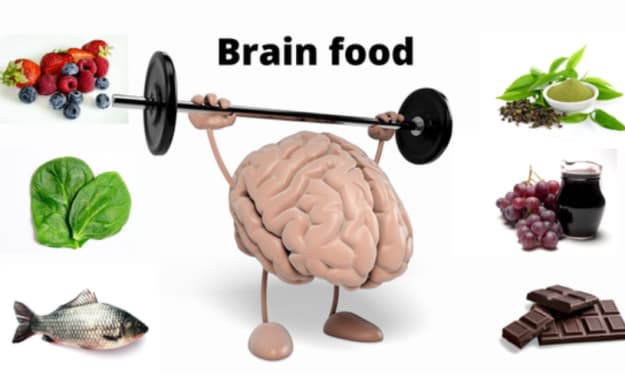What does balance therapy do?
Why is balance important in physical therapy?

### What Does Balance Therapy Do?
Balance therapy, often referred to as vestibular rehabilitation therapy (VRT), is a specialized form of treatment designed to help individuals improve balance and reduce symptoms related to inner ear disorders or other conditions affecting balance. This therapy aims to address issues such as vertigo, dizziness, and instability through targeted exercises and techniques tailored to each patient's needs.
#### Understanding Balance Disorders
Before delving into the specifics of balance therapy, it's crucial to grasp the underlying issues it addresses. Balance disorders can arise from various causes, including:
1. **Inner Ear Problems:** The vestibular system, located within the inner ear, plays a pivotal role in maintaining balance. Disorders affecting this system, such as benign paroxysmal positional vertigo (BPPV), labyrinthitis, or Meniere's disease, can lead to symptoms like vertigo (a sensation of spinning), dizziness, and unsteadiness.
2. **Neurological Conditions:** Certain neurological disorders, such as stroke, multiple sclerosis, or Parkinson's disease, can disrupt the brain's ability to process sensory information essential for balance.
3. **Musculoskeletal Issues:** Problems with joints, muscles, or bones, particularly in the legs and feet, can impair stability and contribute to balance difficulties.
#### The Role of Balance Therapy
Balance therapy is structured to address these challenges comprehensively. Here’s what it typically involves:
1. **Assessment and Diagnosis:** A thorough assessment by a qualified healthcare professional, often a physical therapist or an otolaryngologist, is essential to diagnose the specific balance disorder and its underlying cause. This evaluation may include tests to assess posture, gait, eye movements, and responses to different stimuli.
2. **Customized Treatment Plans:** Based on the assessment findings, a personalized treatment plan is developed. This plan may include a variety of exercises and maneuvers aimed at:
- **Vestibular Rehabilitation Exercises:** These exercises focus on promoting compensation for inner ear deficits and improving the brain's ability to adapt to balance challenges.
- **Gaze Stabilization Exercises:** Targeting eye movements to enhance visual focus and reduce dizziness.
- **Balance Training:** Exercises to improve strength, coordination, and proprioception (awareness of body positioning) to enhance overall stability.
3. **Education and Lifestyle Modifications:** Patients receive education about their condition and practical strategies to manage symptoms in daily life. This may include advice on safe movement techniques, environmental modifications, and coping strategies during episodes of dizziness or imbalance.
4. **Progress Monitoring:** Throughout the therapy process, progress is monitored closely to adjust the treatment plan as needed. This iterative approach ensures that therapy remains effective and tailored to the patient's evolving needs.
#### Benefits of Balance Therapy
The benefits of balance therapy can be profound, offering patients:
- **Reduced Symptoms:** Many individuals experience significant improvements in vertigo, dizziness, and balance control, leading to enhanced quality of life.
- **Increased Independence:** By improving balance and stability, therapy helps individuals regain confidence in their ability to perform daily activities safely.
- **Prevention of Falls:** Addressing balance issues can significantly lower the risk of falls, which is crucial, especially for older adults who are more vulnerable to fall-related injuries.
#### Conclusion
In essence, balance therapy plays a crucial role in managing and improving symptoms associated with various balance disorders. By combining targeted exercises, education, and personalized care, it empowers individuals to regain stability, reduce discomfort, and regain control over their daily lives. If you or someone you know is experiencing balance issues, consulting with a healthcare professional trained in balance therapy could be the first step toward achieving better balance and overall well-being.
### Why is Balance Important in Physical Therapy?
Balance is a fundamental aspect of physical health and well-being, playing a pivotal role in everyday activities and overall quality of life. In the realm of physical therapy, addressing and improving balance is not just about preventing falls but also about enhancing mobility, independence, and overall functional ability. Let’s explore why balance holds such significance in physical therapy practice.
#### Foundation of Functional Movement
Balance forms the foundation for nearly every physical movement we perform. Whether it’s walking, climbing stairs, or reaching for an object, our ability to maintain equilibrium and stability is crucial. Physical therapy interventions aimed at improving balance directly impact a person's ability to carry out these activities safely and efficiently.
#### Rehabilitation from Injury or Surgery
After an injury or surgery, individuals often experience compromised balance due to pain, weakness, or altered proprioception (awareness of body position). Physical therapists employ specific exercises and techniques to restore balance, helping patients regain confidence in their movements and facilitating a quicker return to normal activities.
#### Management of Neurological Conditions
Neurological conditions such as stroke, Parkinson's disease, or multiple sclerosis can disrupt the body's ability to maintain balance. Physical therapists specializing in neurological rehabilitation design tailored programs to address these challenges, focusing on improving coordination, muscle strength, and sensory integration to enhance balance control.
#### Fall Prevention
Falls are a significant concern, particularly among older adults, and can lead to serious injuries and complications. Physical therapists play a crucial role in fall prevention by assessing balance deficits, identifying risk factors, and implementing targeted interventions to enhance stability and reduce the likelihood of falls.
#### Enhanced Sports Performance
In sports and athletic activities, optimal balance is essential for agility, coordination, and injury prevention. Physical therapists work with athletes to improve balance through sport-specific exercises and techniques, thereby enhancing performance and reducing the risk of sports-related injuries.
#### Comprehensive Approach to Rehabilitation
Incorporating balance training into rehabilitation programs offers a holistic approach to recovery. By addressing balance deficits alongside other physical impairments, such as strength or flexibility issues, physical therapists help patients achieve functional goals more effectively and sustain long-term improvements in mobility and independence.
#### Personalized Care and Progress Tracking
One of the strengths of physical therapy is its personalized approach. Physical therapists assess each patient's unique needs and abilities, tailoring balance exercises and interventions accordingly. Regular progress assessments ensure that therapy remains targeted and effective, adjusting interventions as necessary to optimize outcomes. Neuro Balance Therapy Reviews
#### Conclusion
Balance is not just a physical ability but a cornerstone of overall health and functional independence. In physical therapy, improving balance contributes significantly to recovery from injury, management of chronic conditions, prevention of falls, and enhancement of daily life activities. By addressing balance deficits through targeted interventions and personalized care, physical therapists empower individuals to regain confidence in their movements, reduce the risk of injury, and achieve greater overall well-being. If you or someone you know is struggling with balance issues, consulting with a skilled physical therapist can be the first step toward achieving better balance and enjoying a more active, fulfilling life.
About the Creator
peter
Content about cars, motorbikes, technology, news
Enjoyed the story? Support the Creator.
Subscribe for free to receive all their stories in your feed. You could also pledge your support or give them a one-off tip, letting them know you appreciate their work.






Comments
There are no comments for this story
Be the first to respond and start the conversation.